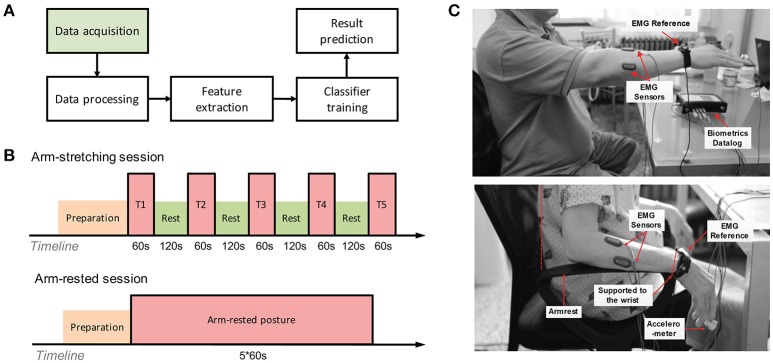Figure 1.
Experimental setup. (A) Example of a general machine learning workflow for tremor differentiation. (B) Experiment protocol incorporating two sessions for each subject. Each session involved one of the postures concerned, i.e., the traditional arm-stretching posture (P1) and the arm-rested posture (P2) proposed in this research. (C) The lateral view of both postures. In the arm-stretching posture (up), the seated subject was required to stretch out one of his/her affected arms and to hold the posture. In the arm-rested posture (down), the subject was seated with both arms supported at the wrists. The height of the seat and the position of body were adjusted to make subject's forearm muscles passively strained.

